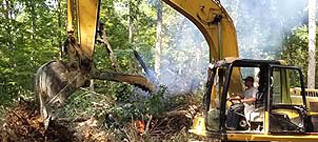Environmental Commentary by Nicholas DiPasquale, director of the Chesapeake Bay Program
For 30 years, the Chesapeake Bay Program — a partnership including the six bay states, the District of Columbia, the Chesapeake Bay Commission, the Environmental Protection Agency and other federal agencies, has been measuring and assessing the bay’s health and working to restore the ecosystem. In many of those years, the health findings were troubling.
This year, as we release our annual Bay Barometer summarizing the bay’s condition and our restoration progress, there remain many results related to water quality that reinforce our need for continued action.
Yet, I have newfound optimism about the future of our region’s most important natural resource. We, who closely monitor the increasing demand for the bay ecosystem’s resources, are painfully aware that what communities and individuals do on the land matters for local water health. We also know when communities take action to limit pollution, our region’s waters respond. Indeed, overall, we are witnessing signs of resilience beginning to rebuild within this diverse and complex ecosystem.
It should come as no surprise that many of the bay health indicators our scientists track — aquatic life, dissolved oxygen levels, bottom habitat – continue to reflect the reality of a seriously impaired bay watershed. Our most recent research shows that only 34 percent of the bay met dissolved oxygen standards and water clarity was very poor. Oyster populations remain low, at less than 1 percent of their historic levels.
A majority of freshwater streams are also in poor or very poor condition, reminding us that cleaning up the Chesapeake Bay is very much a local issue, not just a regional one. Cleaner streams in Pennsylvania, West Virginia and New York aren’t just good for local residents; they are good for the bay.
Those findings are balanced somewhat by positive signs for the future. Not only did the large Susquehanna Flats grass bed survive Tropical Storm Lee in 2011, but grasses in the mid-bay witnessed a dramatic increase and the first grass bed since 1998 was seen in the James River. The bay’s rockfish population, once threatened, remains stable and above target. The adult female crab population, though down, is still within the sustainable range. Early news of a 20-year high in the number of juvenile crabs gives us hope for very positive population numbers to come.
Perhaps most encouraging, there are early indications that the bay’s 2012 dead zone — an oxygen-starved expanse of water in which no life can be sustained — was one of the smallest since 1985.
The lesson is important. The bay responds when we take action; and the efforts our collective partners put in place today will pay off in what scientists’ record tomorrow.
Efforts are under way throughout the watershed, helping to improve local water quality from New York to Virginia and from Delaware to West Virginia. Bay Program partners have supported the creation of 240 miles of new forested buffers — largely planted by rural landowners — and have opened 148 more miles of streams so migratory fish can reach necessary spawning grounds.
Over the last decade, we preserved more than 8 million acres of land and over a two-year span, we restored nearly 4,000 acres of wetlands.
The waters of the bay are more meaningful to those who can experience them first hand. So, we’re very excited to report our partners added 15 new public access sites for a total of 1,144 locations, giving watershed residents more access to the natural resources we’re all working so hard to protect and improve.
Finally, this year’s report shows that in just two years, bay Program partners estimate they moved 20 percent closer to their goal for reducing nitrogen, 19 percent closer for phosphorus and 30 percent closer for sediment. The strides the bay partners are making to meet water quality goals show we’re not only taking the bay restoration effort seriously but also our reporting and monitoring systems are getting better and better.
A lot has changed in 30 years. The Bay Program is proud of the role we have played as we work to fulfill a commitment from our federal and state partners to get all of the practices in place by 2025 that will lead to a cleaner Chesapeake Bay ecosystem.
We urge all of those who care about the health of the bay and its rivers to embrace the signs of hope and the steps we are taking — individuals, communities, nonprofits and governments. They are paying off. We need to stay the course.
Nicholas DiPasquale is director of the Chesapeake Bay Program, the regional partnership that has coordinated and conducted the Chesapeake Bay restoration for 30 years, since 1983. Distributed by Bay Journal News Service.


